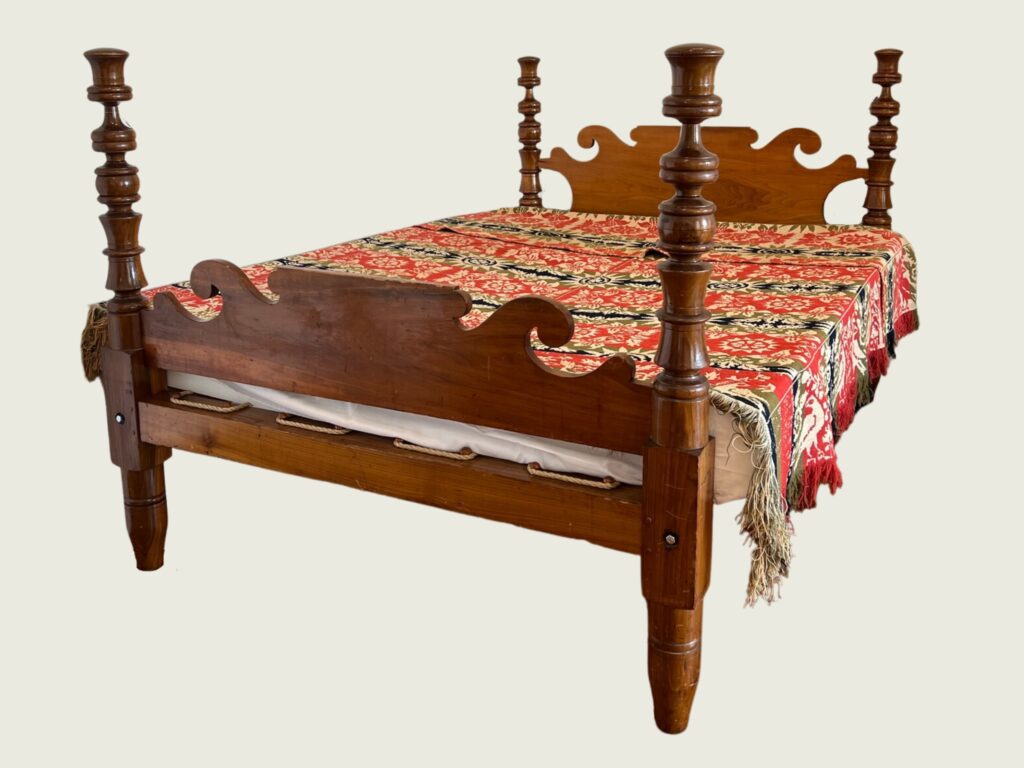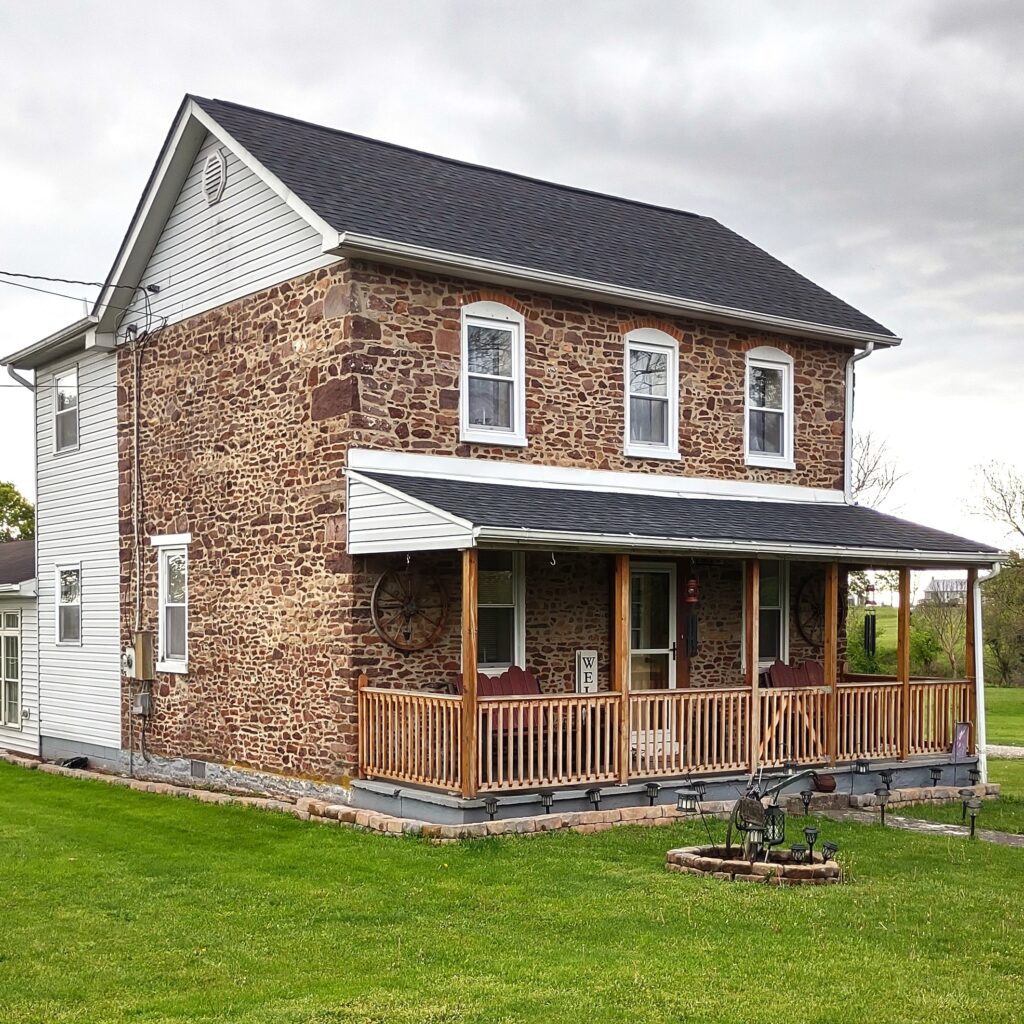A beautiful, dark, stained, cherry bedstead from the mid-19th century recently went on view in Heritage Frederick’s second floor “Frederick County Coverlets” exhibit, and while the coverlets garner all the attention in the exhibition, this early Frederick County rope bed deserves a closer look.

The bed belonged to William Jasper Groshon and his wife, Amy, and it came out of their stone house, still standing today, on Eaton Road in Creagerstown. The Groshon family (originally Grosjean) were immigrants from France who arrived in America in 1751. William’s great grandfather John, born in Edenton, North Carolina, settled his branch of the family in Creagerstown in the first decade of the 19th century.
John Creager laid out the town between 1760 and 1770, and Isaac Kolb built the first house in Creagerstown in 1775. The town experienced many years of steady growth and was home to a tannery and brewery in its early years. By 1858, Creagerstown had a doctor’s office, two stores, a hotel, and a school as well as a church and parsonage.
William Jasper Groshon was born in Creagerstown in 1843. He fought in the Civil War, serving as a private in Company D of the 6th Maryland Infantry. Following the war he married Amy Weddle and worked as a stone mason. Family lore suggests that all nine of the couple’s children were born in this bed and that, tragically, their mother died from the measles in the bed in 1888 at the age of 39. Her obituary indicated that five of the nine children, ranging in age from 20 years to 17 months old, also were suffering with the measles at the time of their mother’s death.


The stone house on Eaton Road served as a meeting place for the Groshon family to gather throughout the years. A widowed daughter-in-law who lived in Philadelphia with her seven children would bring her clan back to Creagerstown to spend summers at the home visiting with their grandfather and cousins, sleeping outside, and enjoying large family dinners in the yard. Margaret, an unmarried daughter of William who kept house for him, is reported to have joked that she had to sleep on a nail when the Philadelphia cousins came to town. She was a small lady, so this may have been true.
Rope beds were invented in the 16th century and fell out of fashion quickly after the invention of the coil spring mattress in 1865. This example is a ¾ size, which would have been standard for the time, and was made in or near Creagerstown around the mid-nineteenth century. A rope bed features pegs along the head and foot boards as well as the side rails. Rope is wound around the pegs, stretching from head to foot and then side to side. The ropes would be tightened regularly with a wooden tool called a bed key, after which a stuffed mattress would be placed on top. The bedtime directive to “sleep tight” comes from this practice. Regardless of how tight the ropes were pulled, rope beds sagged causing anything on the bed to roll toward the center. As a result, they’re most comfortable for just one person to sleep in.
The bed was handed down in the family and was donated to Heritage Frederick in 2003 by George D. Basford, the great grandson of William and Amy Groshon.
May 1, 2023 by Amy Hunt, Heritage Frederick Curator
